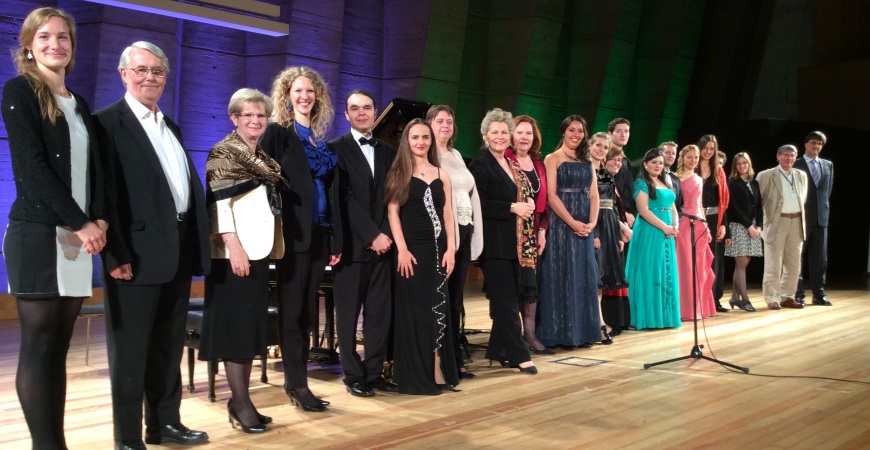Liszt Academy's Rising Stars at UNESCO Paris Headquarters
The proposal of the Kodály Method to the UNESCO Intangible Cultural Heritage list was made memorable by the greatly successful concert of the students of the Liszt Ferenc Academy of Music.
The festive gala concert held in the Paris headquarters of the United Nations Educational, Scientific and Cultural Organization (UNESCO) on 30 June 2014, along with the grand introductory exhibition under the title "Tradition and Ingenuity" opened on the same day were organized by the Hungarian Academy of Arts (MMA) on the occasion that Hungary was recently elected into the Intergovernmental Committee for the Safeguarding of
the Intangible Cultural Heritage. As State Member of the Committee, Hungary represents the nations of the entire Carpathian Basin, as well as the countries of the former Soviet Union and ex-Yugoslavia for a term of four years, which qualifies it to vote about new tenders, including the Kodály Method already nominated for inscription to the list of UNESCO Intangible Cultural Heritage.

Photo: mma.hu
The representative concert conceived by Éva Marton, chairperson of the Section of Theatre Arts of MMA, which featured the folk music-inspired works by Ferenc Liszt, Béla Bartók and Zoltán Kodály, together with the Hungarian folk songs providing the primary sources of their arrangements was performed by students and recent graduates of the Liszt Ferenc Academy of Music: Zsuzsa Vámosi-Nagy flutist, Ivett Gyöngyösi and László Váradi (piano), Bálint Kruppa (violin), as well as opera singers Lucine Sahakyan, Szilvia Vörös and Dániel Pataki-Potyók (with the contribution of Zsolt Balog, Gabriella Gyökér and Mária Kovalszki on piano), and Júlia Kubinyi folk singer. In her introductory speech, Éva Marton, professor emerita of the Liszt Ferenc Academy of Music first presented the young talents to the audience, then went on to give an exhaustive overview of the Liszt Academy, as the top institution determining the entire verticum of Hungarian music education, and the center for the cultivation and transmission of the Kodály method.
As the world-renowned dramatic soprano, holder of a plethora of awards including the Kossuth Prize, the Bartók-Pásztory Prize, the ISO d'ORO lifetime achievement award of the Graz Opera and the Hungarian Corvin Chain observed, the Liszt Academy founded by Ferenc Liszt 139 years ago draws on a uniquely rich tradition, its current pedagogical methods reaching back to Kodály's concept of music teaching. Éva Marton also spoke about the soon-to-be started "model school project" which has been elaborated by Dr. Andrea Vigh, President of the Liszt Academy and Dr. László Nemes, Director of Kodály Institute of the Liszt Ferenc Academy of Music with the objective to wholly renew Hungarian music education, from preschool to higher levels, under the professional guidance of the Liszt Academy. Therefore, by the fall of 2014 the Kodály concept will hopefully be given its rightful place not only in Hungarian musical training but also in the Representative List of UNESCO Intangible Cultural Heritage, said Éva Marton in response to the inquiry of Zeneakademia.hu.


